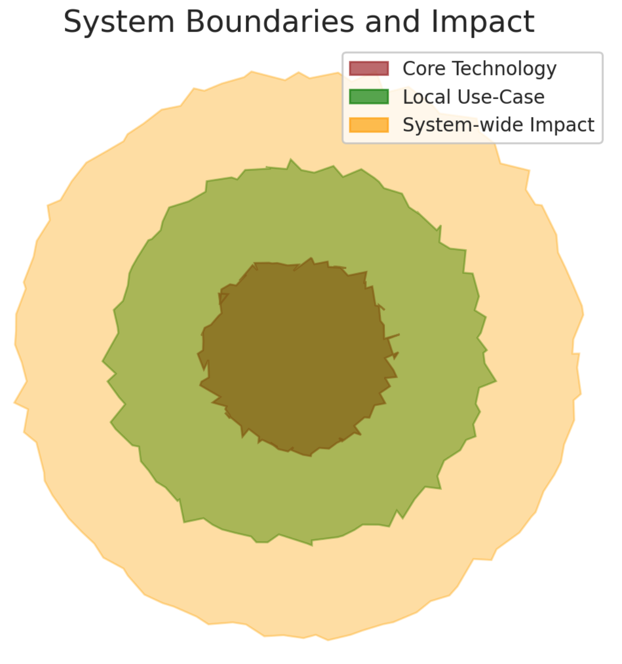Introduction
In the rapidly evolving landscape of climate tech and innovation, we’re often caught in the paradox of reconciling the promise of groundbreaking technologies with their real-world viability and impact. Enter Techno-Economic Analysis (TEA)—a tool that attempts to answer these crucial questions. However, a conventional TEA often falls short when it doesn’t consider the broader systems in which a technology operates. Let’s delve into the need for a more holistic, systems-based approach to TEA.
Our belief at Cool Climate Collective, that in order for the climate technologies to effectively and rapidly go-to-market, they need to always be considered as part of a larger system where in which the solution operates. 5% efficiency in a process, which is only 2% of the overall larger system might not pencil out in terms of RoI (meaning adoption by industry will also be hampered) vs. 5% efficiency within a process that makes up 80% of a system changes the economics and impact potential.
The Conventional Lens
The conventional approach to TEA zeroes in on metrics like efficiency, ROI, and cost implications. And while these are critically important, they often fail to capture the technology’s role within a broader ecosystem. Academic settings, where many of these innovations are born, are particularly susceptible to this tunnel vision.
A Systems Perspective on TEA

Consider the diagram above, which is designed to feel as organic as the thought process it represents. It captures three layers of understanding:
- Core Technology: The innermost layer, where conventional TEA often begins and ends.
- Local Use-Case: The middle layer that situates the technology in its immediate application context.
- System-wide Impact: The outermost layer that situates the technology within a broader, often societal, system.
An Example to Illustrate
Let’s take solar panels as an example. Most studies might focus solely on the efficiency of the solar panel material.
However, what role does this panel play in a solar farm (Local Use-Case)?
Furthermore, how does the farm contribute to the national energy grid (System-wide Impact)?
The Importance of Context
When we talk about impact, it’s important to contextualize the numbers. A technology that seems to make a huge difference on a smaller scale may have a negligible impact on a larger system, significantly affecting investment decisions.
Conclusion
The systems view fundamentally shifts how we approach, evaluate, and invest in new technologies. It ensures that we are not mesmerized by the allure of isolated metrics but are instead considering how a technology fits into a broader tapestry of systems.
Incorporating systems thinking into TEA is more than an intellectual exercise; it’s a necessity for anyone serious about meaningful change. The next time you find yourself awestruck by a new technology’s promise, take a step back and ponder the system it will operate in. After all, both the devil and the angel are in the details.